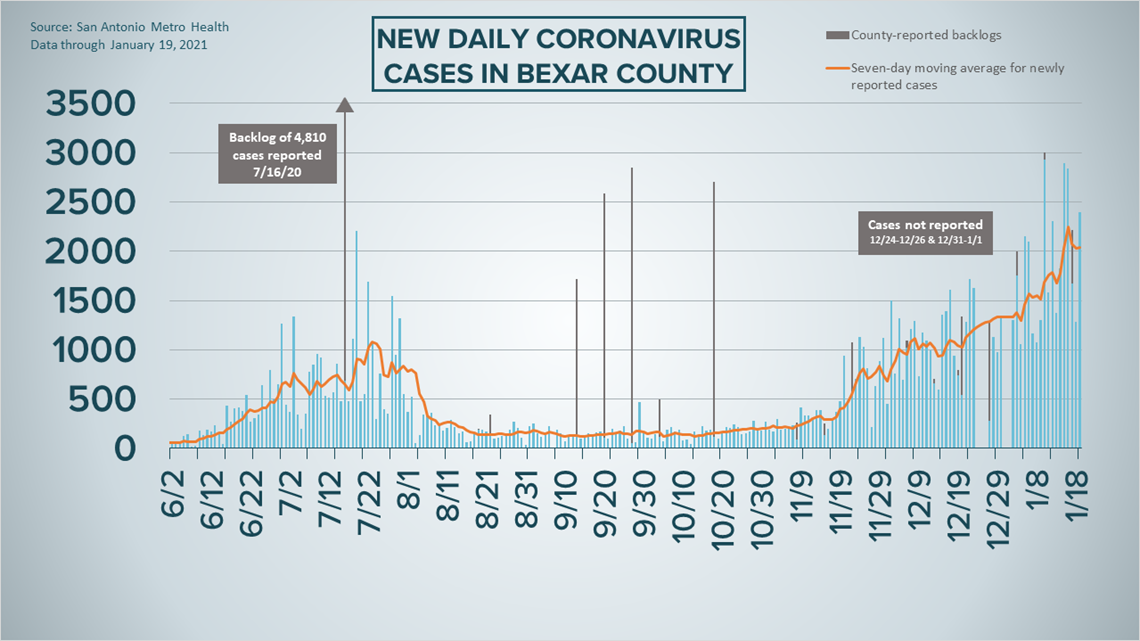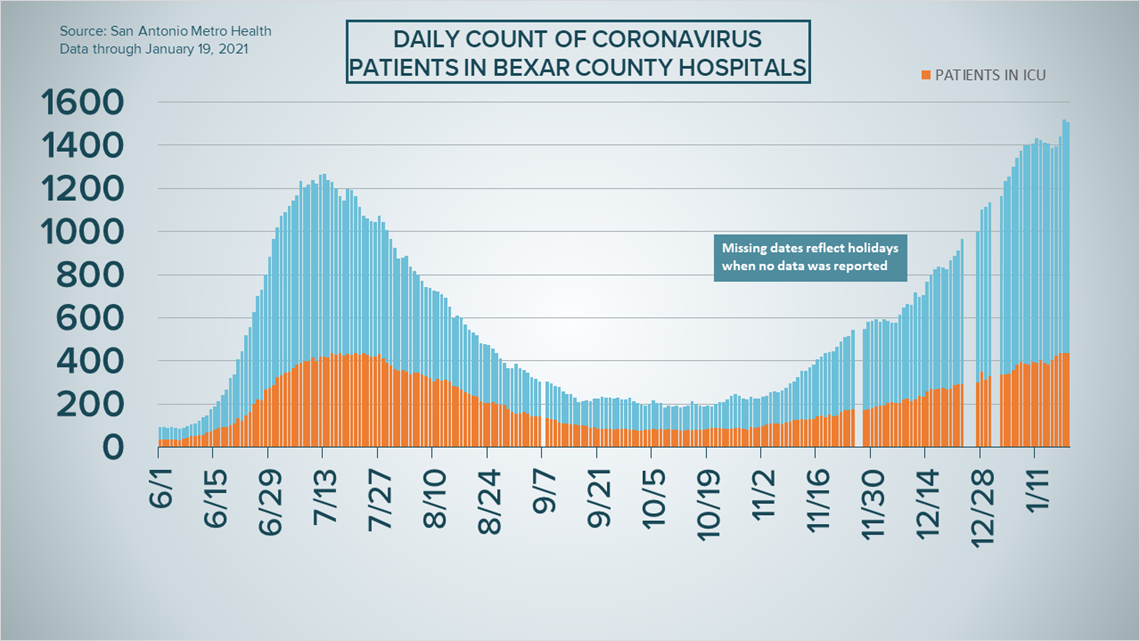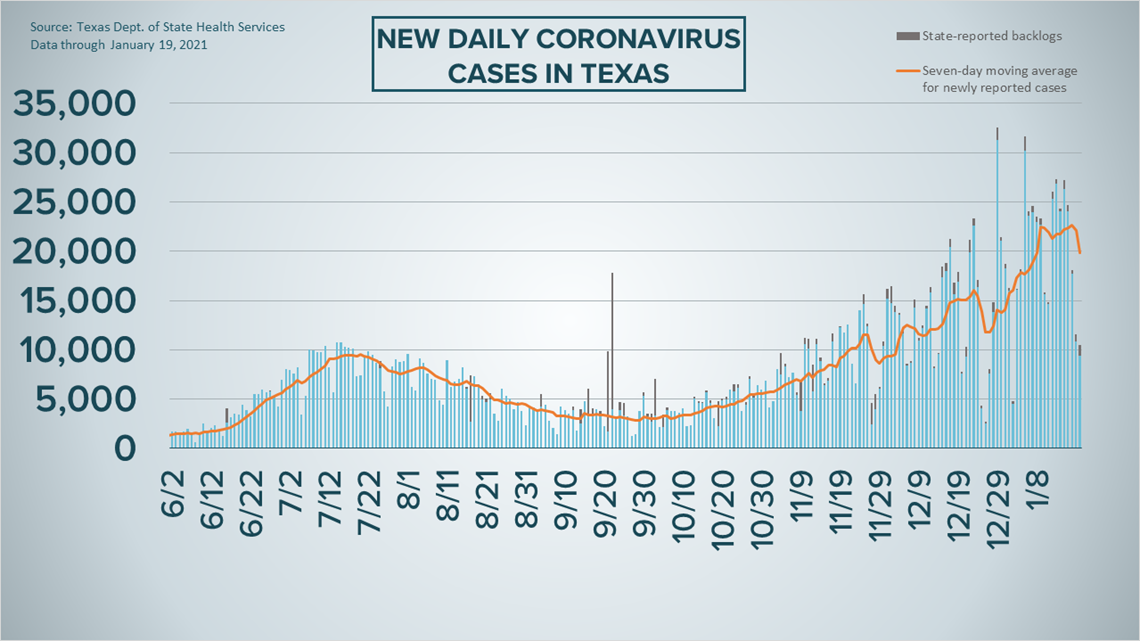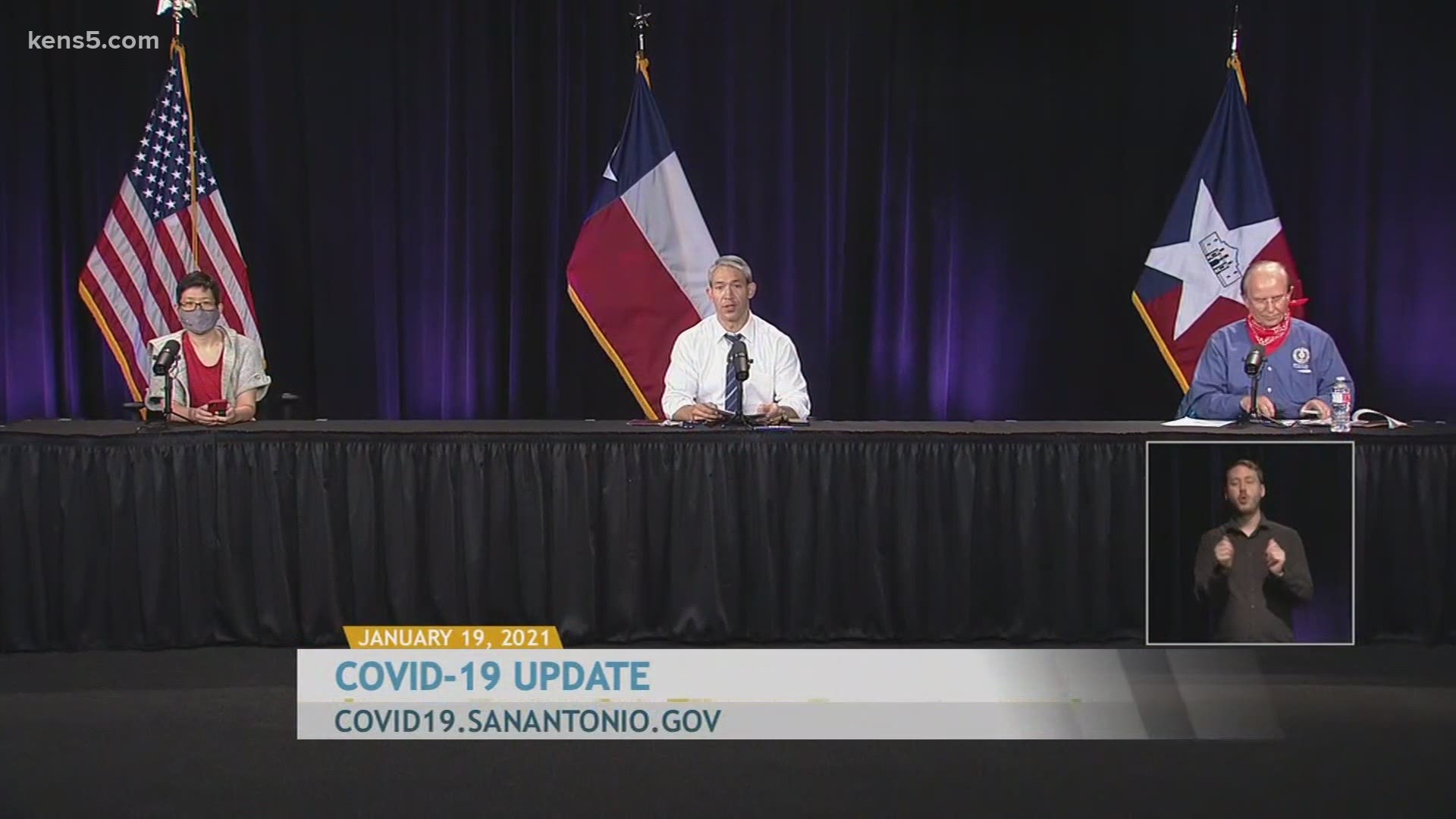SAN ANTONIO — We're tracking the latest numbers from the coronavirus pandemic in San Antonio and across Texas. Here are the latest numbers reported by Bexar and surrounding counties:
- Bexar County: On Tuesday, 2,395 new cases were reported, bringing the total number of cases to 152,231. 10 new deaths were also reported, raising the local death toll to 1,822.
- Hays County: On Tuesday, officials reported 707 new cases in the county and eight additional COVID-related fatalities. As of Tuesday, there are a total of 13,647 lab-confirmed local cases, while the death toll rose to 162. Officials estimate 10,741 residents have recovered, while 2,744 are still ill with the virus.
- Comal County: On Tuesday, officials reported 80 new cases and 19 additional COVID-related fatalities. There are a total of 7,325 cases, including 4,153 confirmed and 3,161 probable cases, while 220 county residents have died due to COVID-19 complications. The county estimates 6,364 residents have recovered, while 741 are still ill with the virus.
More county case information is available through the Texas Department of Health Services COVID-19 dashboard.
How Bexar County is trending
We've tracked how many coronavirus cases have been confirmed in Bexar County from the time officials began reporting cases in March 2020. The graphic below shows the number of cases since June and charts those daily case numbers along a 7-day moving average to provide a more accurate picture of the overall coronavirus case curve in our area and the direction we're trending amid the pandemic.
Mayor Ron Nirenberg reported an additional 2,395 cases on Tuesday for a total of 152,231 local infections since the pandemic began. The seven-day moving average jumped from 2,028 on Monday to 2,041 on Tuesday.


Nirenberg also reported 10 new deaths from virus complications, raising the local death toll to 1,822.
Following four straight days of increased hospitalizations, the number of patients receiving COVID-19 treatment decreased at Bexar County facilities. On Tuesday, 1,507 patients were concurrently hospitalized in the county, which is 15 fewer overall compared to Monday. 164 new patients were admitted in the past 24 hours; officials say 36.8% of patients in area hospitals have COVID-19.
Tuesday marked the second time more than 1,500 patients were concurrently receiving treatment for the coronavirus at area hospitals. 435 patients are in the ICU, while 257 patients are on ventilators.


January's surge in local COVID-19 cases puts the county on track to add more than 55,000 new coronavirus diagnoses in the month alone, which would be the worst month for coronavirus spread in the community. So far this month, 33,000 Bexar County residents have been diagnosed with COVID-19; that's more than 21% of the county's total cases.
Coronavirus in Texas
The total number of novel coronavirus cases in the state since the pandemic began grew by 10,491 on Tuesday, according to the Texas Department of State Health Services. That total includes 8,300 new confirmed cases, 1,069 new probable cases, and 1,122 cases attributed to backlogs not previously reported in the state's total (more details can be found at the top of this page).
DSHS noted that Tuesday's report was incomplete due to an anomaly in Bexar County's numbers, which state officials did not update.
Tuesday's figures bring the total number of Texans diagnosed with COVID-19 to 2.135 million.


State health authorities also reported 310 additional virus-related deaths on Tuesday. At least 32,394 Texans have now died from COVID-19 complications.
The number of Texans receiving treatment at hospitals for coronavirus symptoms rose by 70 overall patients. On Tuesday, the concurrent total stood at 13,928.
The state estimates that about 1.711 million Texans have recovered, while 376,764 Texans remain ill with COVID-19.
The latest update from the Texas Education Agency showed that there have been at least 118,939 cumulative cases among staff and students across the state through January 10. That number comprises 74,277 positive student cases and 44,662 staff cases. More information can be found here.
The TEA releases new data on school cases on Fridays.
Latest Coronavirus Headlines
- 'It's a little bit overwhelming': Small SA funeral home inundated with COVID-19 deaths
- Biden, Harris attend COVID-19 memorial ceremony to remember those we lost
- Startling UK study reveals potential long-term coronavirus complications
- US virus death toll tops 400,000 in Trump's final hours
- Texas lawmakers offered vaccine despite ineligibility
- Gov. Abbott says more than 843,000 doses coming to Texas this week
- How one Texas couple handled COVID-19 vaccine delays
Coronavirus symptoms
The symptoms of coronavirus can be similar to the flu or a bad cold. Symptoms include fever or chills, cough, shortness of breath or difficulty breathing, fatigue, muscle or body aches, headache, new loss of taste or smell sore throat, congestion or runny nose, nausea or vomiting, and diarrhea, according to the Centers for Disease Control.
Most healthy people will have mild symptoms. A study of more than 72,000 patients by the Centers for Disease Control in China showed 80 percent of the cases there were mild.
But infections can cause pneumonia, severe acute respiratory syndrome, kidney failure, and even death, according to the World Health Organization. Older people with underlying health conditions are most at risk.
Experts determined there was consistent evidence these conditions increase a person's risk, regardless of age:
- Chronic kidney disease
- COPD (chronic obstructive pulmonary disease)
- Obesity (BMI of 30 or higher)
- Immunocompromised state (weakened immune system) from solid organ transplant
- Serious heart conditions, such as heart failure, coronary artery disease, or cardiomyopathies
- Sickle cell disease
- Type 2 diabetes
The CDC believes symptoms may appear anywhere from two to 14 days after being exposed.
Human coronaviruses are usually spread...
- Between people who are in close contact with one another (within about 6 feet).
- Through respiratory droplets produced when an infected person coughs, sneezes or talks. These droplets can land in the mouths or noses of people who are nearby or possibly be inhaled into the lungs.
- Some recent studies have suggested that COVID-19 may be spread by people who are not showing symptoms.
Help stop the spread of coronavirus
- Stay home when you are sick.
- Eat and sleep separately from your family members
- Use different utensils and dishes
- Cover your cough or sneeze with your arm, not your hand.
- If you use a tissue, throw it in the trash.
Find a Testing Location
City officials recommend getting a COVID-19 test if you experience fever or chills, cough, shortness of breath or difficulty breathing, fatigue, muscle or body aches, headache, new loss of taste or smell, sore throat, congestion or runny nose, nausea or vomiting, or diarrhea.
San Antonio operates several no-cost testing locations, including two walk-up locations open Monday-Sunday from 10 a.m. until 2 p.m.:
Cuellar Community Center
5626 San Fernando St.
San Antonio, TX 78237
Ramirez Community Center
1011 Gillette Blvd.
San Antonio, TX 78224
Additionally, Freeman Coliseum offers drive-through no-cost testing from Monday through Sunday between 9 a.m. and 4 p.m. An appointment is required and can be made either online or by calling (833) 213-0643.
Here's a Testing Sites Locator to help you find the testing location closest to you in San Antonio.

